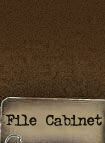 |
| |

Battle Relic: Modern US
Army Combat Application Tourniquet
Introduction: We have solved
another modern day “battlefield
myth”.
While poring over images of US
troops deployed in Afghanistan the
mysterious red tips protruding from
soldiers’ right shoulder pockets
struck us as odd.
These “tongue-like objects” mostly
appear underneath the Infra-Red US
flag on GI Multicam uniforms and
often show a bit of black fabric as
well.
“A hint to the colors of the Afghani
national flag?”, we wondered. |
|
(click for
an enlargement)
Soldiers of the 101st
Airborne Division (Air Assault)
during deployment in Afghanistan
wearing Combat Application
Tourniquets in their sleeve pockets. |
|
Item Description:
A one-handed tourniquet proven to be
100% effective by the U.S. Army’s
Institute of Surgical Research. The
C-A-T® completely occludes blood
flow of an extremity in the event of
a traumatic wound with significant
hemorrhage.
The C-A-T® utilizes a windlass
system with an internal band
providing circumferential pressure
to the extremity. Once tightened,
bleeding will cease and the windlass
is locked into place. A hook and
loop windlass retention strap is
then applied, securing the windlass
to maintain pressure during casualty
evacuation. The C-A-T®’s dual
securing system avoids the use of
screws and clips which can become
difficult to operate under survival
stress or where fine motor skills
are compromised.
The Combat Application Tourniquet®
featuring the proprietary red tip
design and the mechanical advantage
of a band within a band has been the
Official Tourniquet of the U.S. Army
since 2005. |
(click for
an enlargement)

A soldier of the 1st "Big Red One"
Infantry Division applies the C-A-T®
during training.
(Injuries to arm are artificial) |
|
The innovations in
the C-A-T® are protected by U.S.
Patent Nos. 7,842,067 and 7,892,253. |
History: An intensive
search of the internet revealed that
these are the strap ends of
so-called Combat Application
Tourniquets, or CAT’s, recently made
mandatory for carrying in the right
shoulder pockets for US servicemen
in Afghanistan. The Taliban use of
roadside bombs, or Improvised
Explosive Devises, made this rule
necessary. “The red elliptical tip
features NAR's Red Tip Technology™
to assist users of the CAT in
locating and threading during
application”, the official
description of the manufacturer
tells us.
|
|
Seeing troopers of the 101st
Airborne Division (Air Assault)
carry the CAT tourniquet either on
post, in combat and on patrol,
brings back memories to the
Screaming Eagles of World War Two.
Then, the sky soldiers not only
distinguished themselves from
“persons other than paratroopers” by
wearing jump wings and jump boots.
In combat they adorned their web
gear or helmets with the special
first aid kits for paratroopers
containing a morphine syringe, a
bandage and…. a tourniquet. The red
tip reminds us of the paper sulfa
powder bag packed with each bandage
in the kit. Thanks to the internet,
we now also own one of these
tourniquets, “noted as the best
pre-hospital tourniquet in […]
The Journal of Trauma”. |
|
|
|
EXHIBITIONS: |
|
(click for
an enlargement)

Lay-out of a C-A-T® (left)
and the contents of a World Ward Two
Vintage
"First Aid Kit, Parachutist's"
(right)
Note that a "Red Tip" was called a
"Red Flap" in the 1940's.

The proper way of
carrying the C-A-T® in the right
sleeve pocket
of the Operation Enduring Freedom
Camouflage Patten (OCP) Uniform.

Apparently the wear
of the C-A-T® is subject to unit
prescriptions.
In this image, which this agency
took during the September 17th 2014
assault of
"A" Company of the 501st Infantry
Regiment, 82nd Airborne Division,
on the road bridge across the river
Maas at Grave in the Netherlands,
the unit's C.O., CPT Burnette, is
seen with a tourniquet strapped to
his
Fighting Load Carrier (FLC) Tactical
Vest, typical to his unit. |
|
Back to Battlerelics
 |
|
|
|
|
|
| |
| |
| |
| |
|













